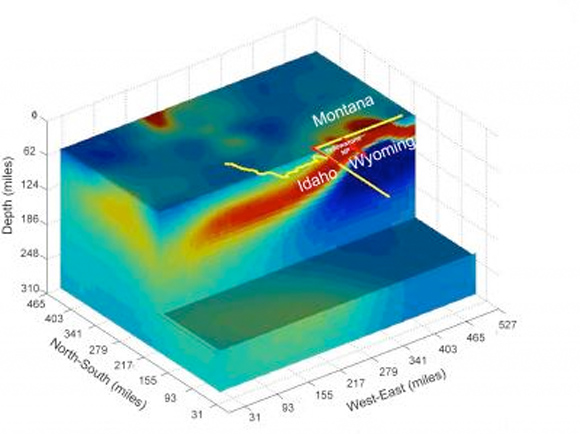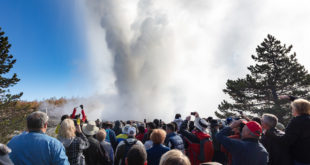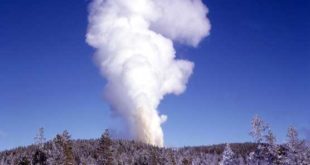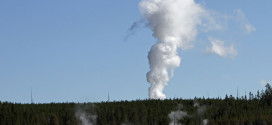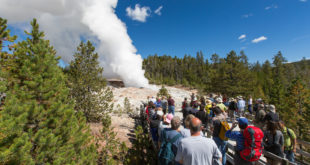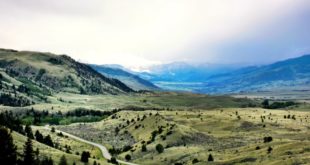That’s 250 miles larger than a 2009 study using seismic waves from earthquakes to model the plume. In that study, the plume was shown to be some 150 miles long, descending some 410 miles below the planet’s surface.
Using electrical conductivity may be the more accurate method of determing the size of the plume: it measures electricity generated by molten silicate rocks and hot briny water mixed in partly molten rock. (Seismic-wave research cannot measure liquids, but it can detect molten or partly molten rock that slow seismic waves.)
“It’s like comparing ultrasound and MRI in the human body; they are different imaging technologies,” says geophysics Professor Michael Zhdanov, principal author of the new study and an expert on measuring magnetic and electrical fields on Earth’s surface to find oil, gas, minerals and geologic structures underground.
Despite the differences in the specifics, both sets of measurements yielded roughly the same picture.
“It’s a bigger size” in the geoelectric picture, says study co-author Robert B. Smith, professor emeritus and research professor of geophysics and a coordinating scientist of the Yellowstone Volcano Observatory. “We can infer there are more fluids” than shown by seismic images. “This body that conducts electricity is in about the same location with similar geometry as the seismically imaged Yellowstone plume.”
Seismic and ground-deformation studies previously showed the top of the rising volcanic plume flattens out like a 300-mile-wide pancake 50 miles beneath Yellowstone. There, giant blobs of hot and partly molten rock break off the top of the plume and slowly rise to feed the magma chamber – a spongy, banana-shaped body of molten and partly molten rock located about 4 miles to 10 miles beneath the ground at Yellowstone.
The study was conducted by Zhdanov, Smith, two members of Zhdanov’s lab – research geophysicist Alexander Gribenko and geophysics Ph.D. student Marie Green – and computer scientist Martin Cuma of the University of Utah’s Center for High Performance Computing. Funding came from the National Science Foundation (NSF) and the Consortium for Electromagnetic Modeling and Inversion, which Zhdanov heads. The new University of Utah study has been accepted for publication in Geophysical Research Letters, which plans to publish it within the next few weeks.
RELATED STORIES: New Research Shows Size, Shape of Yellowstone Plume
We’ve also set up a free Twitter account so you can receive updates on the device of your choice.
 Yellowstone Insider Your Complete Guide to America's First National Park
Yellowstone Insider Your Complete Guide to America's First National Park
